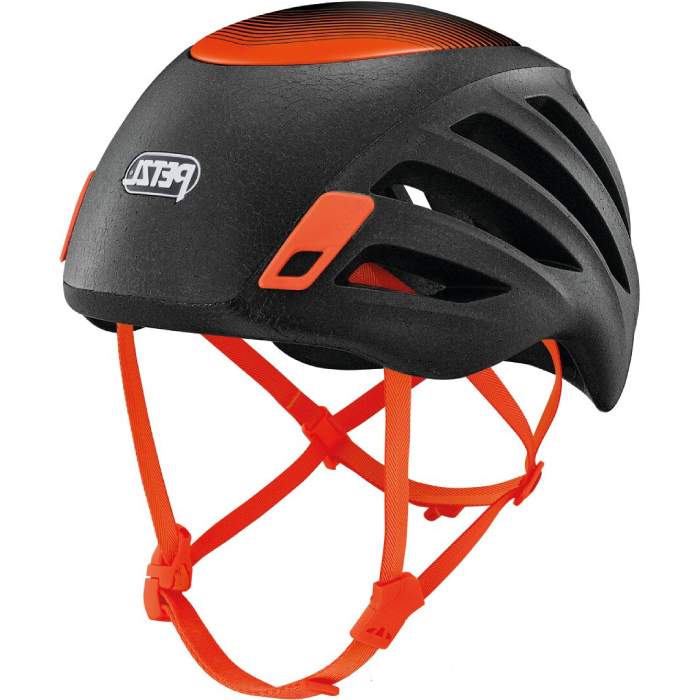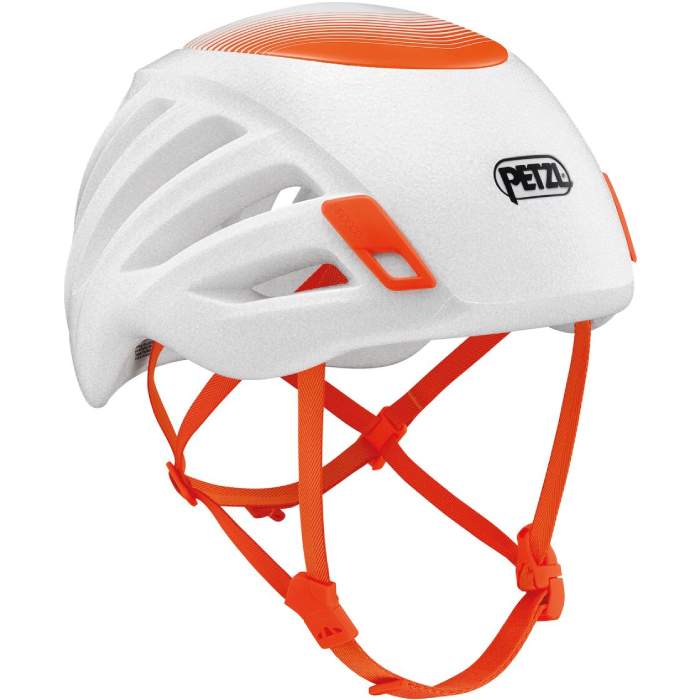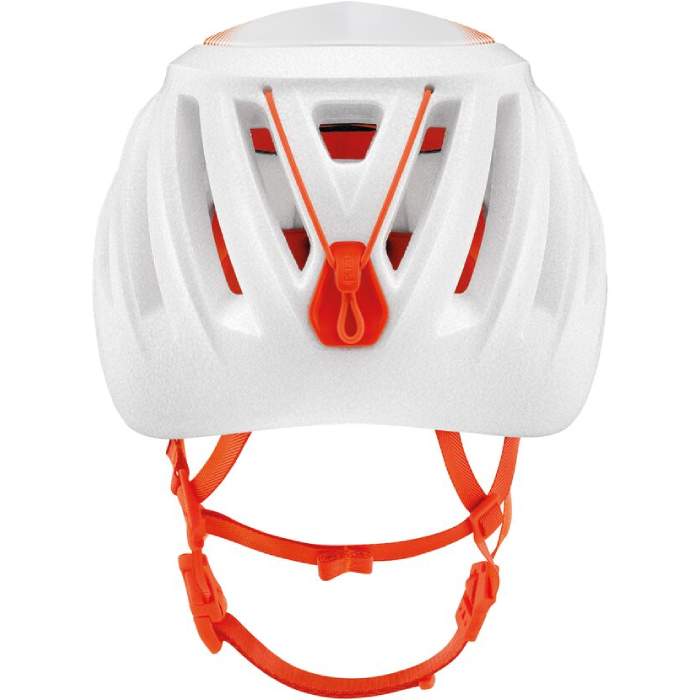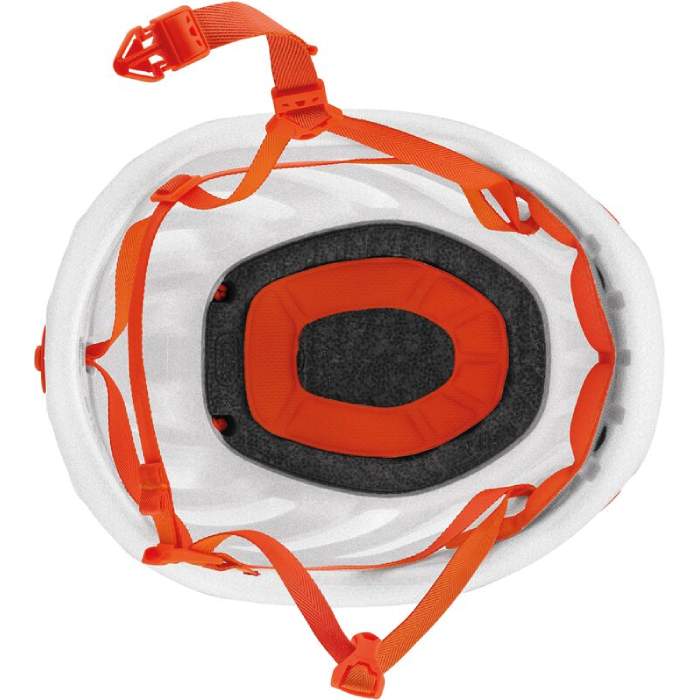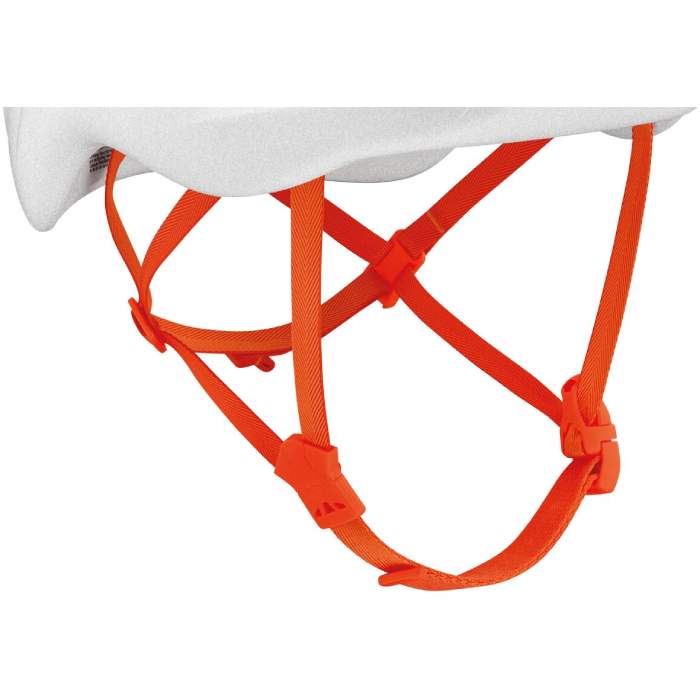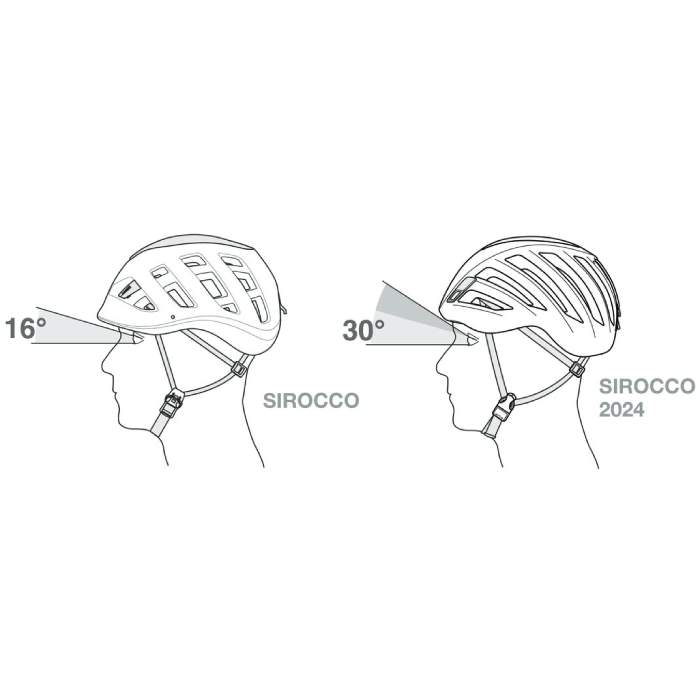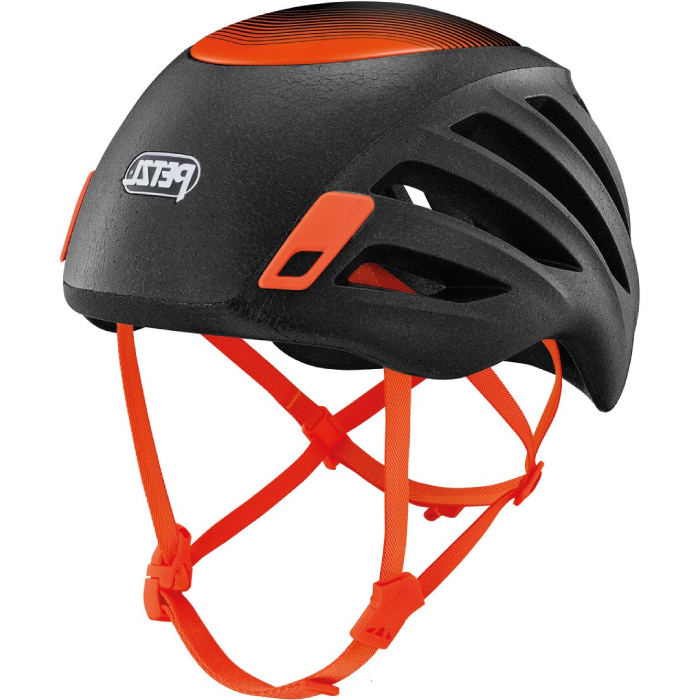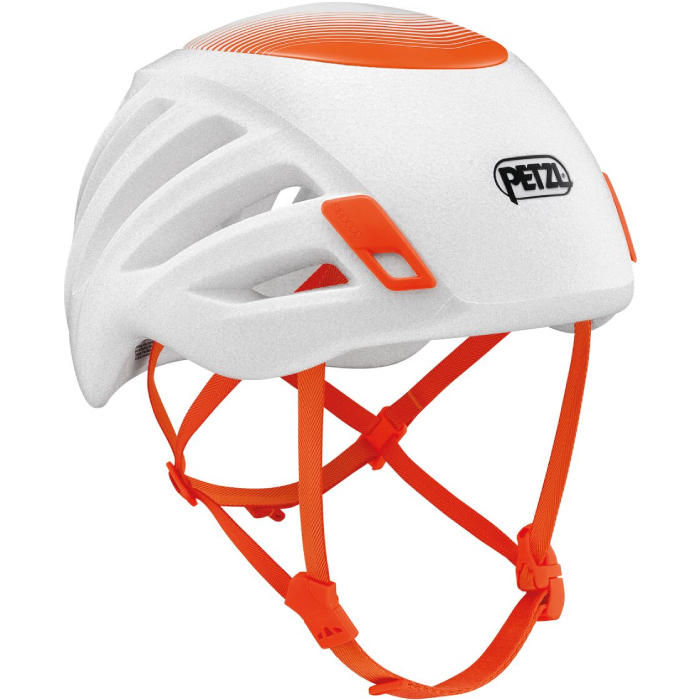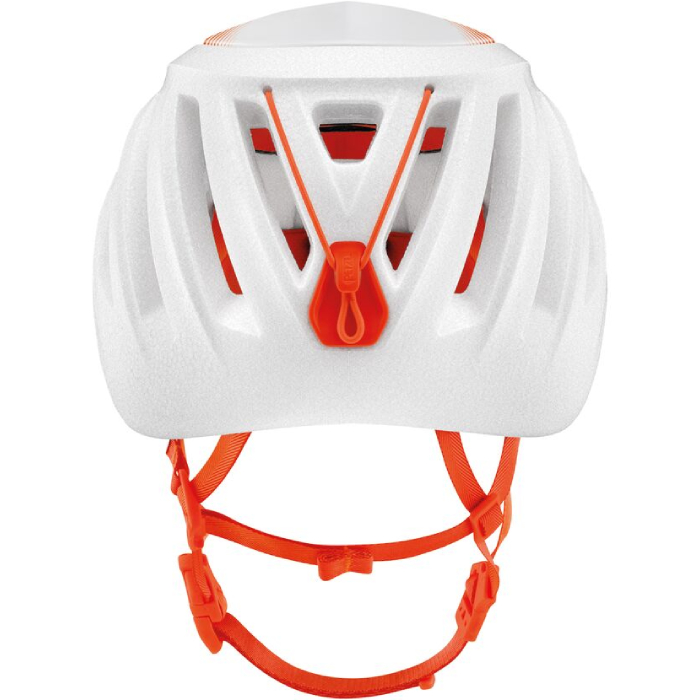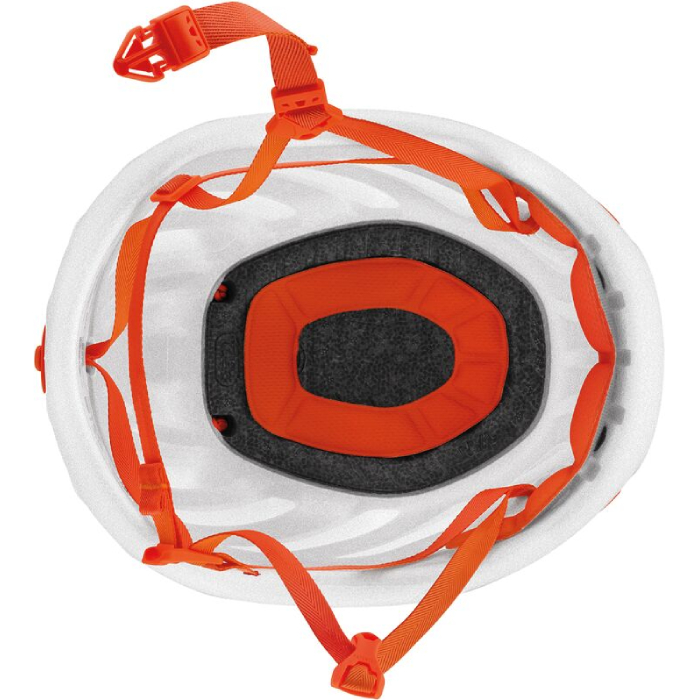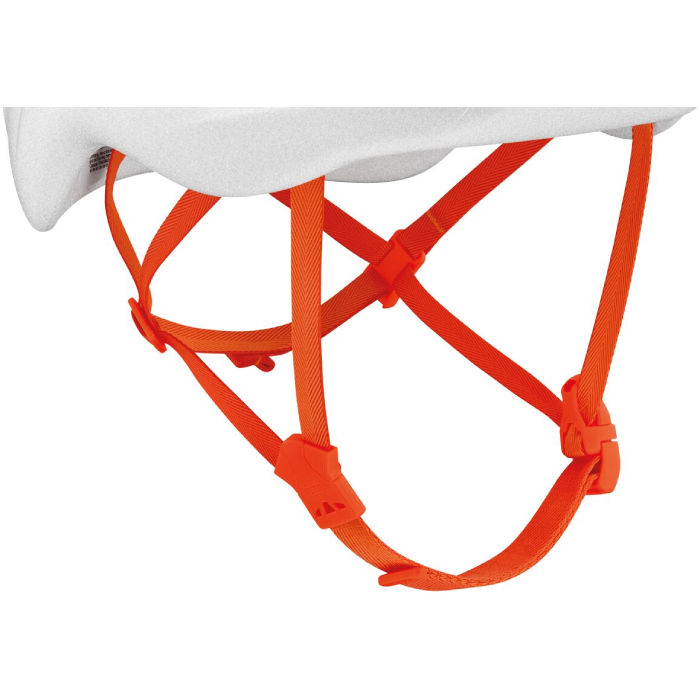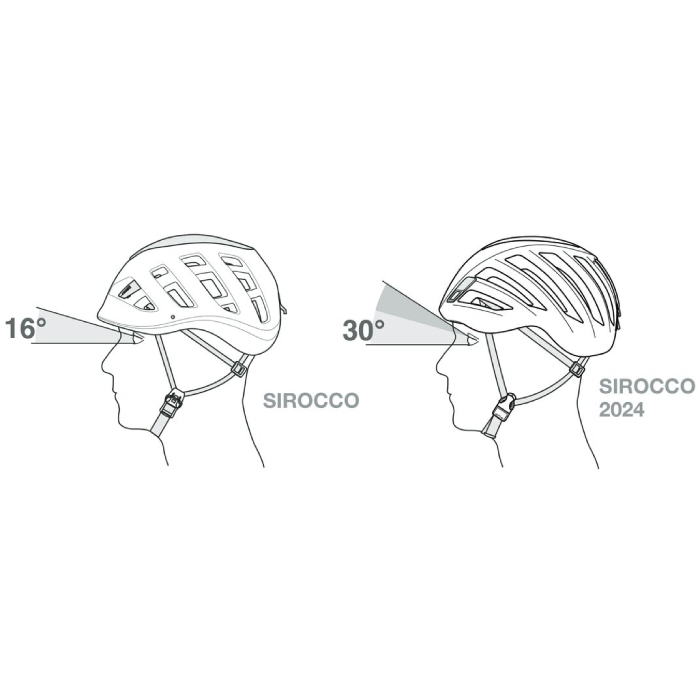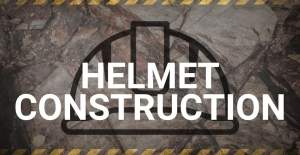A checklist helping you monitor your helmet health, helping to know when to retire your personal protection equipment.
Sirocco
Description
Ultra-lightweight helmet for climbing and mountaineering.
Remarkably lightweight for ambitious climbers and mountaineers. The SIROCCO helmet was designed to give you an exceptional weight-to-protection ratio. Lower in the back, the design provides greater coverage and offers enhanced protection over the entire head. Its low profile and superior ventilation give you all-day comfort.
- Ultra-lightweight design:
- Perfect for long days at 170 g
- Minimalist buckle and adjustable webbing for increased comfort and lighter weight
- Hybrid construction with an EPP (expanded polypropylene) foam shell and rigid crown injected with EPS (expanded polystyrene) foam - Enhanced protection:
- Designed in accordance with Petzl’s TOP AND SIDE PROTECTION label
- Designed for optimal protection against impacts to the side, front, and rear of the head - Maximum comfort in action:
- Open front profile makes the helmet rim invisible to the user and offers an unobstructed field of view
- Headband and chinstrap webbing are fully adjustable
- Low-profile buckle locks in place to help keep the chinstrap from loosening unintentionally
- In addition to ventilation holes, the interior foam and liner feature integrated air channels for better air circulation
- Two front clips and rear elastic band for securing a headlamp to the helmet
Specifications
- Material(s): Expanded polypropylene (EPP) foam shell, polycarbonate crown, expanded polystyrene (EPS) liner, polyester webbing
Retail price
When you click a link below and then checkout online, no matter what you buy (climbing gear or not), we get a small commission that helps us keep this site up-to-date. Thanks!

Weight (g)  Weight (g)In grams, the weight, as stated by the manufacturer/brand. If there are differences in weight (due to multiple size or optional accessories) we note those here. | 160 g S/M: 160 g / 5.6 oz |
Gender  GenderThis is the gender as stated by the manufacturer/brand. We use the term "Men" and "Unisex" interchangeably, as there is no difference between these types of helmets. |
Unisex |
Size Range  Size RangeThe sizing options of the helmet according to the manufacturer. | 19.00 in - 24.02 in S/M: 48-58 cm / 19-23 in |
Features  FeaturesBike Cert (EN 1078)The EN certification for helmets used for bicycling and skating. The major difference in testing 1078 involves needs for more head coverage and for the helmet to pass a deflection or 'roll-off' test of the impact force. BrimHaving a brim on a helmet may be inconsequential to some climbers but they make a great additional bit of protection against sun, rain and falling debris like small rocks or verglass. Multiple SizesThis is helpful for those with particularly small or large heads because helmets that come in 2 or 3 sizes cover a broader range of head size. Usually these are denoted as size 1 or 2, though some brands have S/M and M/L. Face Shield CompatibleFace shields are a part of PPE that could be handy when drilling, developing and cleaning particularly dirty remote routes. Usually only used by work at height professionals. MIPS technologyMIPS or Multidirectional Impact Protection System is a technology designed to reduce the amount of impact force that makes it to the brain. This is accomplished by adding a low friction cap between the liner and the helmet, allowing the shell to deflect around the head rather than transfer the forces from impact directly to the wearer. Many bicycle helmets include this feature and it is starting to be applied to sports like skiing, motorcycling and climbing. Many MIPS helmets are also EN1078 compliant. Ponytail CutoutSo far these are only found in "women's" helmets. It's a cutout / notch area that accommodates a low hanging ponytail hairstyle. RECCO® reflectorThese are used in locating someone missing or buried in an avalanche and are becoming more common in climbing gear due to the increased popularity of ski mountaineering. Though they are more often sold as something to add onto the helmet than being built into one, some manufacturers have begun to build them in. Ski Cert (EN 1077)The EN certification for helmets used for climbing and skiing. This test is simpler than the EN/UIAA one performed for helmets in general, but increases the amount of force that a helmet must endure. Likely this to simulate the faster speeds involved with downhill skiing impacts versus rockfall or climber accidents. This cert becoming more common in helmets as SkiMo popularity increases and more climbers are adding backcountry skiing to their mountaineering repertoire. |
Multiple Sizes |
Quick Adjust  Quick AdjustQuick Adjust refers to the straps of the helmet. Do you want the ability to ability to "quickly" adjust the fit. This could be a dial, or other plastic pieces. Really, most climbers don't need to change the fit of the helmet often, unless you're climbing with and without hats, or you have big hair that flattens and then requires tightening after climbing for awhile. |
No |
Vents  VentsRefers to openings in the helmet body to allow air flow. Commonly found in most helmets these days, but often more so in foam and hybrid foam helmets than traditional hardshell polycarbonate shells. Learn More
Click here to read more on helmet construction |
Yes |
Headlamp Compatable  Headlamp CompatibleMany helmets include hooks or clips for holding a standard headlamp in place, which is quite useful for the caver or alpinist. Ask any climber who has been benighted and they’ll tell you just how useful this feature can be. |
Yes |
Face Shield Compatable  Face Shield CompatibleFace shields are a part of PPE that could be handy when drilling, developing and cleaning particularly dirty remote routes. This feature isn't very common in climbing helmets and usually only used by work at height professionals. |
Yes |
| Certification | CE, EN, UIAA |
No reviews yet.
This helmet is not cheap. It is among the most expensive helmets on the market, and the exposed foam will puncture sooner or later. That said, this is one of the best options if you are looking for the lightest helmet out there and are willing to be careful in how you treat your equipment. It presents a good value, especially if it inspires you to wear it more often, as it did for some of our testers.
Describes with words and helpful photos, how to protect your Petzl helmets.
A pictoral representation of the UIAA-106 and EN-12492 standards for helmets.
The UIAA equipment standard provides a baseline for equipment performance in a test lab under controlled conditions on new equipment. Although these test conditions are relevant to the conditions encountered climbing, conditions encountered at the crags and the condition of the equipment are equally important. This recommendation from the UIAA member federation The British Mountaineering Council (BMC) provides vital equipment information that is NOT explicitly addressed in the standard, particularly failure modes of the equipment and recommendations for the use, inspection, maintenance, and retirement of equipment.

